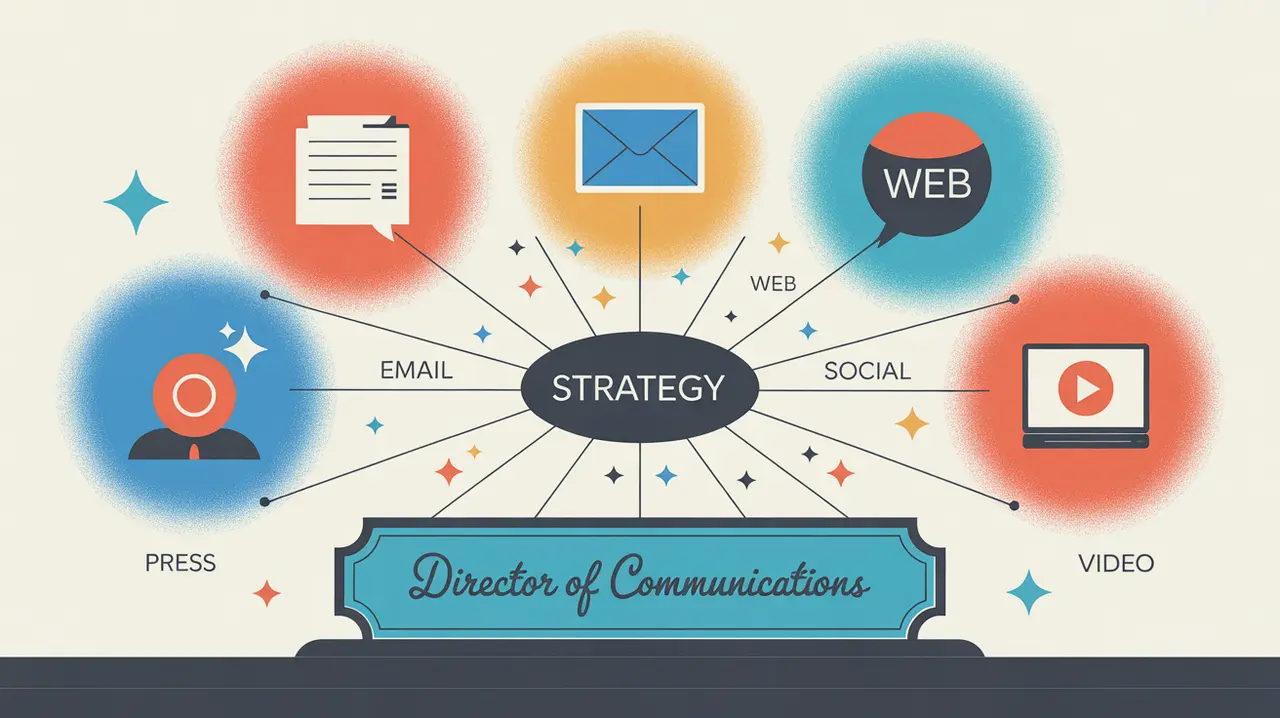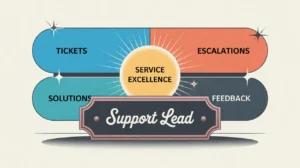What Does the Director of Communications Role Involve?
A director of communications is responsible for leading the organization’s communications strategy to shape its public narrative, build brand visibility, engage key audiences, and support programmatic and fundraising goals. This involves overseeing strategic messaging, media relations, digital communications, publications, and internal communications. The role typically sits at the intersection of leadership, marketing, and public engagement functions and works closely with executives, program leaders, development teams, and advocacy staff. In both nonprofits and social enterprises, directors of communications play a critical role in ensuring the organization speaks with clarity, consistency, and influence across all channels.
At What Level does this Role Operate?
Executive Level: This role typically reports to the chief executive officer or another member of the executive team. It involves leading communications teams, managing budgets, setting strategic priorities, and serving as the organization’s communications lead with external stakeholders.
Relative Employability: Director of communications roles are in high demand across nonprofits, social enterprises, philanthropic organizations, advocacy groups, and mission-driven businesses. As strategic communications become increasingly central to influence, engagement, and growth, experienced communications leaders are essential.
Relative Pay Scale: Within nonprofits and social enterprises, director of communications roles sit in the executive pay bands, reflecting their strategic leadership, public visibility, and influence over organizational positioning.
What are the Key Responsibilities and Activities?
- Develop and lead comprehensive communications strategies that advance organizational goals and strengthen reputation
- Oversee media relations, including press releases, interviews, and strategic engagement with journalists and outlets
- Manage digital communications, including websites, social media, email, and multimedia content
- Shape organizational messaging to ensure clarity, consistency, and alignment with mission and strategy
- Lead brand management efforts, ensuring cohesive visual and narrative identity across all platforms
- Supervise communications staff and consultants, providing strategic direction and performance oversight
- Collaborate with leadership, program, development, and advocacy teams to align communications with broader objectives
- Represent the organization as a spokesperson or prepare leadership for high-level media engagements
- Monitor and evaluate communications performance to inform strategy and decision-making
What Core Competencies and Qualifications are Needed?
Required Qualifications and Experience
The following reflect common qualifications and experience expected for this role, while recognizing that pathways may vary by context, organization, and region.
- Relevant academic background in communications, journalism, marketing, public relations, or a related field, or equivalent professional experience
- Extensive experience in communications strategy, media relations, and digital engagement
- Proven ability to lead teams, manage budgets, and oversee complex communications initiatives
- Strong writing, editing, and storytelling skills
- Experience working with media, digital platforms, and strategic messaging at a senior level
Key Competencies
- Strategic communications leadership
- Media relations and public engagement
- Narrative development and brand management
- Digital strategy and content oversight
- Team leadership and cross-functional collaboration
- Representation and spokesperson abilities
How are AI and Automation Shaping this Role?
An AI-native director of communications will look to AI and automation to strengthen strategic messaging, improve content creation workflows, and deepen audience insights. They can use AI tools for media monitoring, narrative analysis, trend forecasting, and audience segmentation. Automation can streamline content scheduling, performance reporting, and personalized engagement at scale, allowing communications directors to focus on strategy, narrative shaping, and external positioning. By integrating AI thoughtfully, directors of communications can sharpen their organization’s voice and increase its influence in competitive communication environments.
What Career Pathways and Transferable Skills are Associated with this Role?
Director of communications roles can lead to positions such as chief communications officer, chief engagement officer, or other executive leadership positions. The skills developed in strategy, media engagement, digital leadership, and storytelling are highly transferable across nonprofits, social enterprises, government, multilateral organizations, and the private sector. This role provides a strong foundation for advancing into positions that shape organizational strategy and public presence at the highest levels.







